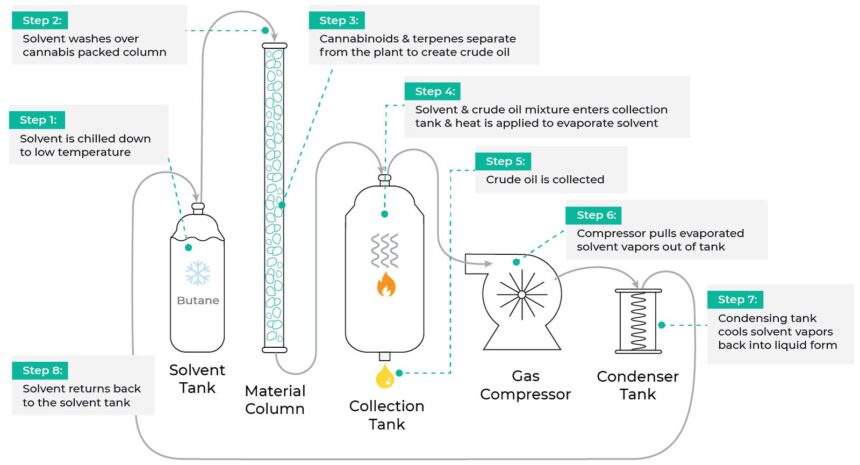There’s a lot of buzz around CBD, but how it is extracted can be a mystery.
You may know CBD is extracted from hemp, but how does this happen? What does the CBD extraction process look like? And what’s the difference between CBD isolate and full spectrum CBD? We want to help. Keep reading for a brief guide to the CBD extraction process!
Definition of CBD Extraction
CBD extraction is extracting CBD oil from hemp or cannabis plants. This can be done using various
methods, such as distillation, pressing, and vaporizing. It is important to note that there are some differences between CBD oils derived from hemp and cannabis, so it is best to know what type is being extracted before beginning the process.
Crystal Resistant CBD Distillate
The crystal resistant CBD distillate process is a complex process that creates the
purest form of CBD at the end. It begins with biomass, which is reduced into its crude oil form. The crude oil is then passed through a series of extraction steps as it is refined and separated from unwanted fats and waxes.
Different Types of CBD Extraction
The most common types of CBD extraction are CO2 extraction, hydrocarbon extraction, and dry ice
extraction.
CO2 Extraction
CO2 extraction, the pressure of carbon dioxide, causes a solvent-free extraction of the CBD
molecules.
Hydrocarbon Extraction
Hydrocarbon extraction uses solvents, such as propane and butane, to extract and separate
cannabinoids from other plant matter.
Dry Ice Extraction
Dry ice extraction breaks up the plant matter and uses cold temperatures to extract the cannabinoids. The main disadvantage of this method is that it is slow and expensive. No matter which extraction method is used, the end product will go through additional steps such as purification, decarboxylation, and distillation to further refine the composition and concentration of the extracted CBD. After these steps, the final CBD product is ready for retail.
Understanding the Ingredients and Steps Involved
The process starts with acquiring the hemp plant material through physical or solvent extraction.
This material is then dried, ground into a fine powder, heated, and mixed with a solvent. Usually,
ethanol separates the cannabinoids from the plant material. Once the desired cannabinoid is extracted, the ethanol is evaporated, and the extracted CBD oil is winterized, filtered, and decarboxylated. These steps are necessary to ensure the highest quality CBD product, as each step helps remove unwanted by-products, such as chlorophyll, waxes, and lipids. After decarboxylation, the CBD oil is ready for consumption or use in topical products.
Benefits of CBD Extraction
Some benefits of the CBD extraction process include greater accuracy in potency levels, superior
extraction of active compounds, and isolation of terpenes and other valuable plant compounds. In addition, CBD extraction is an environmentally friendly process that leaves minimal to no carbon
footprint. Moreover, it is possible to customize the process to concentrate different compounds from the plant in distinct products with different properties, making it a very versatile option.
Learn CBD Extraction
The CBD extraction process is a complex yet exciting procedure! With the right equipment and
knowledge, those wishing to create unique CBD products can achieve just that. With the right practice and guidance, anyone can become a master of the CBD extraction process!
Get started today and see what you can create. Did you find this article helpful? Check out the rest of our blog.






